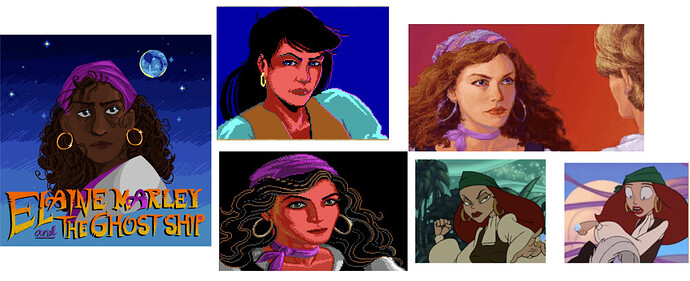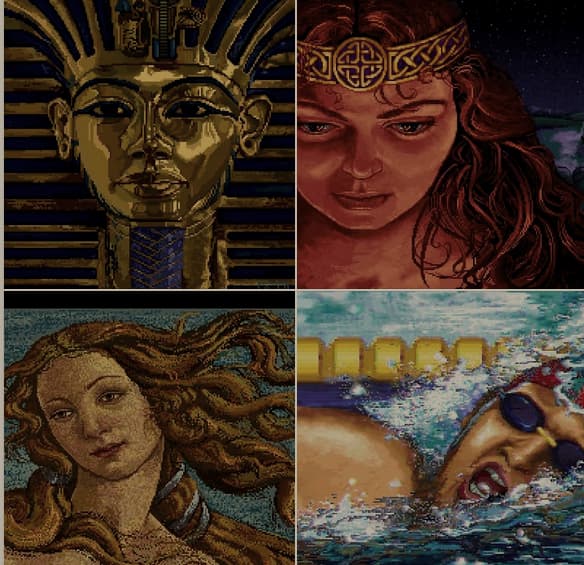Marbles, D, and the Sinister Spotlight by @kamineko (Drew Cook)
I’m going to write some Spring Things again this year, time permitting. Hopefully this thread doesn’t end up with just one or two reviews.
The Story
Marbles has a simple story: you’re a cat, and you’re investigating some sort of creature at a stage show alongside your human owner, D.
D is just the secondary protagonist. For gameplay purposes, you are strictly working from the perspective of Marbles the cat. I really like the way she is written: she’s conceited, but she’s also ignorant of human things and willing to gloss over that.
Just as important as those two characters is the one that’s not in the title. The creature you’re trying to deal with is a grue from Zork.
I’ve never played that game, so the fact that this centers around one of its characters didn’t make a huge impact on me. I did recognize the name, though, and I know it’s not something you want to come across.
Marbles tries to balance feelings of slight terror but also compassion toward the creature. The writing gets the tone across effectively in its own right, but I can’t say exactly how effectively it does that in relation to the source material.
Gameplay
Onto the game mechanics. Since Marbles has you playing as a cat, you rarely manipulate objects directly. Instead, you direct D’s attention to them. (And later, you direct the other character in another way.)
In some ways, this approach to gameplay is straightforward, since it advances the plot significantly after each successful action. However, as the game progresses it asks you to negotiate some spaces and draw attention to objects in very specific ways. None of these have very strong conceptual links in their own right, IMO.
In other words, I think Marbles really demands the player to build up a mental space of how the stage/auditorium is laid out. If I had played with the pictures on, that might have helped, but only a few would work as useful diagrams.
In the end, the game isn’t terribly difficult, and it’s probably about as easy as the author intended. But I’d say that’s mostly due to the small map and limited number of objects. I think that the gameplay would quickly become complicated in a larger game.
I did check the hints a few times. Speaking of hints, this game does something smart: it only allows you to see hints for the part of the game that you’ve reached. So there’s no way to spoil things for yourself accidentally.
On top of all that, the game can be even more straightforward — it also gives you the option to read it as a linear story.
Themes
What is the game about? It’s a short story that touches on themes of family, empathy, being together with someone else, and knowing what they’re like. (Those things are all nicely contrasted with a setting in which the characters are alone).
As I said, I don’t know much about the source material, so I had to create my own premise for the plot. More specifically …
Based on the initial D, and based on the fact that Drew uses a cat in his profile picture, I couldn’t stop myself from assuming D is the author’s childhood self.
Maybe it’s him as a child daydreaming about both the thoughts of his cat.
That’s the premise that I made up in my head – since it’s the sort of way I imagined myself with fictional characters and animals as a kid. And even now, I guess.
But the game didn’t validate me whenever I accidentally typed “Drew,” and the character D is apparently from one of his earlier games.
So that may or may not be what he was going for.
Animal Player Characters
One more thing. A few of the games I’ve recently played have had animal PCs (or secondary PCs). During IF Comp, there was @draconis 's Miss Gosling, and I also played @CMG 's Toby’s Nose and @malacostraca’s free bird. at some point.
Broadly, animal PCs can serve as a basis for a unique gameplay style — a chance to reduce the number of actions that the player has to deal with while adding in extra considerations.
And apart from that … it’s just fun. Similar to Toby’s Nose, Marbles gives you a chance to freely act like a cat in ways not directly tied to the plot, which is fun. (I don’t think I tried in Miss Gosling since Watson the dog is the secondary character).
Anyway, in Marbles, you earn a score for being appropriately catlike. I’m not sure whether this actually affected the final outcome, but scoring oneself on performing properly feline actions seems in character for a self-concerned cat.
Come to think of it, there was also Octopus’ Garden last Spring Thing, which was enjoyable but probably didn’t fully realize the alien mindset of an octopus in its gameplay. I know there many others, but I don’t see a list on IFDB, so I’ll leave it at that.


